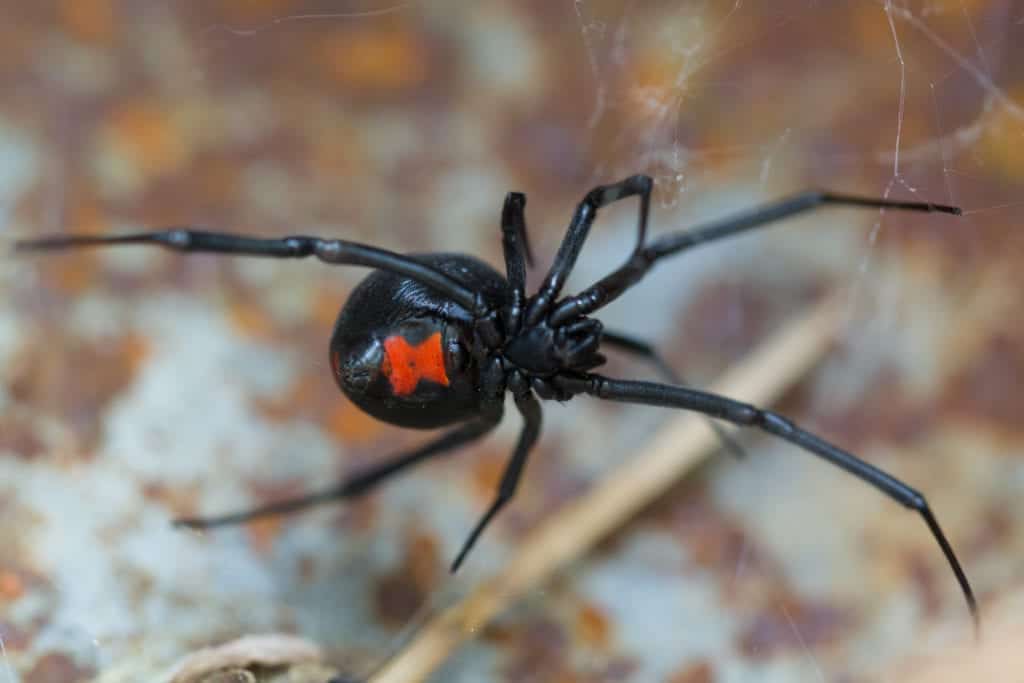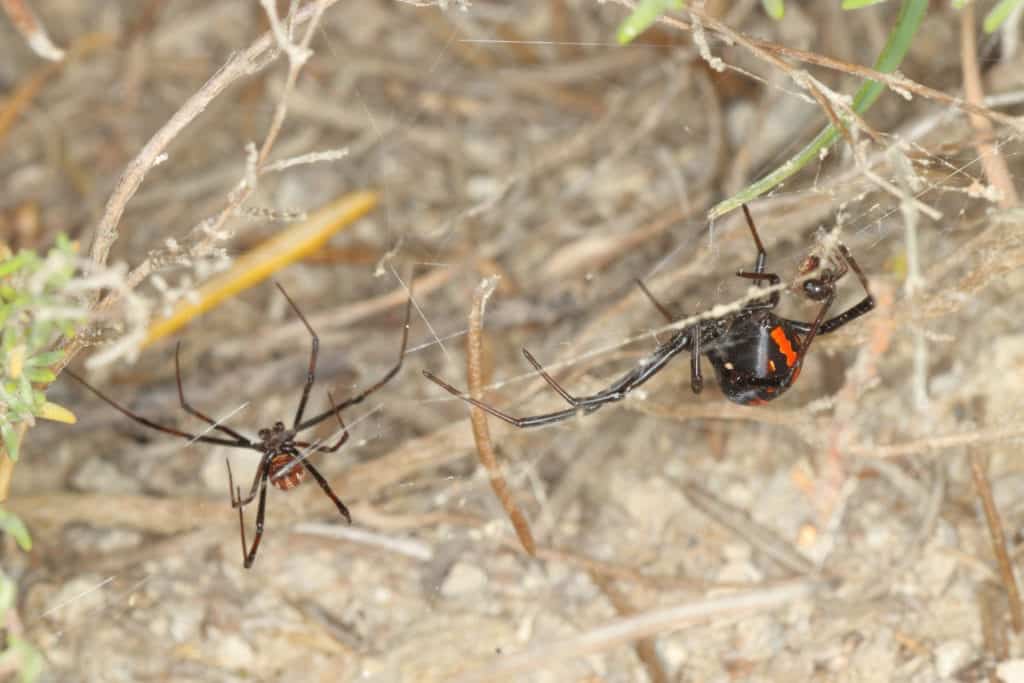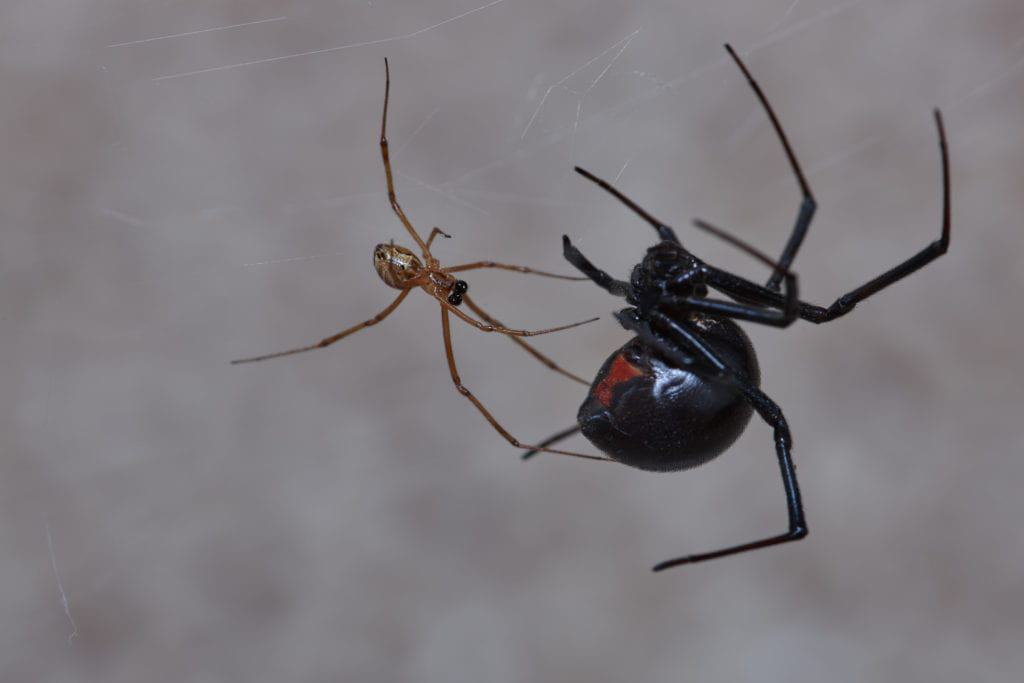A Love to Die For
A Love to Die For
Black Widows
Black widows are dangerous, carnivorous arachnids. They can be found in various areas throughout the United States and like to find dark, semi-sheltered areas to spin their webs. Thankfully, they do not tend to prefer to inhabit homes, and far more often are found outdoors. Out of their spider family, the Theridiidae, the black widow is the largest averaging 3-4mm in length for males and 8-10mm for females. Their average lifespan is roughly 1 year, however some spiders cared for in captivity can survive up to 3 or 4 years. In a lifetime a female black widow has the ability to produce between 10 to 917 offspring. 
Love is a Dangerous Game
Black widows are nocturnal and solitary creatures. The only time they engage in socialization is during mating, which typically occurs in the Spring. Both males and females reach sexual maturity between 70-90 days following hatching, at which time the females begin to release pheromones conveying their eligibility for mating. The life of a male black widow spider is particularly precarious. On average, only 12% of males who are prepared to mate even survive to actually successfully mate. This is due to a myriad of dangers that they face just searching for a mate. While in nature, often times male species will steer clear of one another to avoid conflict over mates. However, this is extremely difficult for black widows to do. As black widows live outdoors, winds become a significant factor in a male’s ability to track down a sexually receptive female. Due to this, if one male has been following the trail of a female and creating silk walkways to traverse through the environment, other males will utilize these silk trails of their rivals to also try to reach the female. Running into one another along the way ends in battles to the death but, with so few females to compete for, facing rivals is inevitable. 
Malicious Mates
Black widows aren’t just solitary, they’re also territorial, antagonistic, and even cannibalistic. So, for the 12% of males that actually reach a female seeking to mate they are at risk of the much larger female attacking, killing, and eating them before even engaging in the long-winded mating rituals of these arachnids. These mating rituals are another factor that works against them as it is very time consuming. The males will take part in a series of movements, various vibrations, and even silk-making. During this time, other males may follow his trail to the female, interrupting the ritual and once again throwing him into a potentially fatal fight for the mate. But, after facing harsh environments, potential predators, battling with rival suitors, risking their lives facing the female prior to mating, engaging in a mating ritual that could allow rivals to attack again, and FINALLY actually mating, they still may die. True to their name and infamous reputations, black widow females will often cannibalize their male partner after their encounter. Luckily for the males, studies show that this post-mating cannibalism is only done roughly 2% of the time… finally granting some males a slightly better chance at survival in this deadly game of love. 
Citations
McCorkle , M. (2002) Latrodectus Mactans, Animal Diversity Web. Edited by K. Yurewicz. The University of Michigan. Available at: https://animaldiversity.org/accounts/Latrodectus_mactans/ (Accessed: September 2020). Solly, M. (2019) Male Black Widow Spiders Find Potential Mates By Following Other Suitors’ Trails, Smithsonian Magazine. Available at: https://www.smithsonianmag.com/smart-news/male-black-widow-spiders-find-potential-mates-following-other-suitors-trails-180972786/ (Accessed: September 2020).
Request a Free Quote Today
(We do not share your data with anybody, and only use it for its intended purpose)


